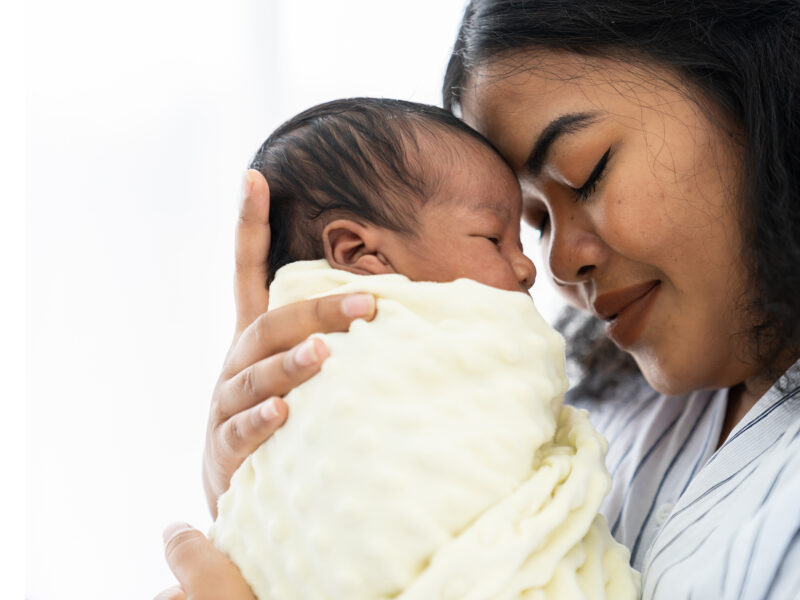Lower Traffic Volumes During COVID-19 Shut-Downs Lead to Fewer Injuries
Lower Traffic Volumes During COVID-19 Shut-Downs Lead to Fewer Injuries https://pediatricsnationwide.org/wp-content/uploads/2021/04/AdobeStock_9798456-1024x683.jpg 1024 683 Laura Dattner Laura Dattner https://pediatricsnationwide.org/wp-content/uploads/2023/03/LauraDattner-web-002.jpg
To minimize transmission of COVID-19, in spring 2020, most U.S. states passed policies promoting social distancing through stay-at-home orders prohibiting non-essential travel. While vehicle-miles traveled in the United States decreased by 41% in April 2020 compared to 2019, the effect of this mobility decrease on motor vehicle crashes (MVCs) is poorly understood.
Motao (Matt) Zhu, MD, MS, PhD, from the Center for Injury Research and Policy at Nationwide Children’s Hospital, led a team that estimated associations between COVID-19-related social-distancing policies, traffic volume and MVC-related outcomes in Ohio. This observational study used MVCs and traffic volume data from January 1-July 31, 2020 and January 1-August 1, 2019 (accounting for 2020’s leap-year day). Mean daily counts were calculated and compared across study periods for three types of crash-related outcomes, in addition to traffic volume:
- MVC involvements: number of people involved in MVCs
- MVC injuries: number of people sustaining any injuries in MVC
- MVC severe/fatal injuries: number of people sustaining a severe or fatal injury
Three state-level policies demarked four study periods in 2020:
- Period 1: January 1 through March 8
- Period 2: March 9 (state-of-emergency declaration) through March 22
- Period 3: March 23 (stay-at-home order) through May 11
- Period 4: May 12 (retail reopening) through July 31
From January 1 through July 31, 2020, 284,128 individuals experienced MVCs, with 27,809 sustaining some level of injury, 3,719 severe injuries, and 621 fatalities, compared to 382,098 individuals involved, 33,365 injuries, 4,243 severe injuries and 619 fatalities in 2019. When separated by period of 2020, all outcomes substantially declined during Period 2 and reached the lowest level directly following the stay-at-home order before gradually increasing through Periods 3 and 4 (Figure).
Period 2 saw significantly larger daily changes than any other period of 2020 across all outcomes: -7.1% for MVC involvements, -5.1% for MVC-related injuries, -5.6% for MVC-related severe/fatal injuries and -4.1% for traffic volume (Table).
Relative to the same 2019 period, Period 3 showed the largest difference: 55% fewer MVC involvements, 47% fewer injuries, 34% fewer severe/fatal injuries, and 44% lower traffic volume. In Period 4, mean daily counts of MVC-related injuries and severe/fatal injuries approached 2019-levels.
“As the pandemic continues, policymakers should consider the effects of lock-down and reopening policies on factors beyond COVID-19 infection, including MVC-related injuries and deaths,” said Dr. Zhu, lead author of this study and principal investigator in the Center for Injury Research and Policy.
Ohio’s state-of-emergency declaration was associated with substantial decrease in MVC-involvements, injuries and traffic volume. These findings coincide with behavior change likely associated with Ohio Gov. DeWine’s state-of-emergency declarations: schools suspended in-person classes, sporting events restricted spectators and large gatherings were banned. A return to 2019-levels in the number of MVC injuries and severe/fatal injuries was observed in Period 4, perhaps due to increased alcohol and cannabinoids use, speeding, harsh acceleration/braking events and mobile phone use observed among drivers following COVID-19 lockdowns, according to the authors.
Reference:
Li L, Neuroth LM, Valachovic E, Schwebel D, Zhu M. Association Between Changes in Social Distancing Policies in Ohio and Traffic Volume and Injuries, January Through July 2020. JAMA. 2021 March 9; 325(10): 1-3.
Image credit: Adobe Stock
About the author
Laura Dattner, MA, is a research writer in the Center for Injury Research and Policy of the Abigail Wexner Research Institute at Nationwide Children’s Hospital. With both a health communications and public health background, she works to translate pediatric injury research into meaningful, accurate messages which motivate readers to make positive behavior changes.
- Laura Dattnerhttps://pediatricsnationwide.org/author/laura-dattner/
- Laura Dattnerhttps://pediatricsnationwide.org/author/laura-dattner/
- Laura Dattnerhttps://pediatricsnationwide.org/author/laura-dattner/
- Laura Dattnerhttps://pediatricsnationwide.org/author/laura-dattner/
- Post Tags:
- Center for Injury Research and Policy









